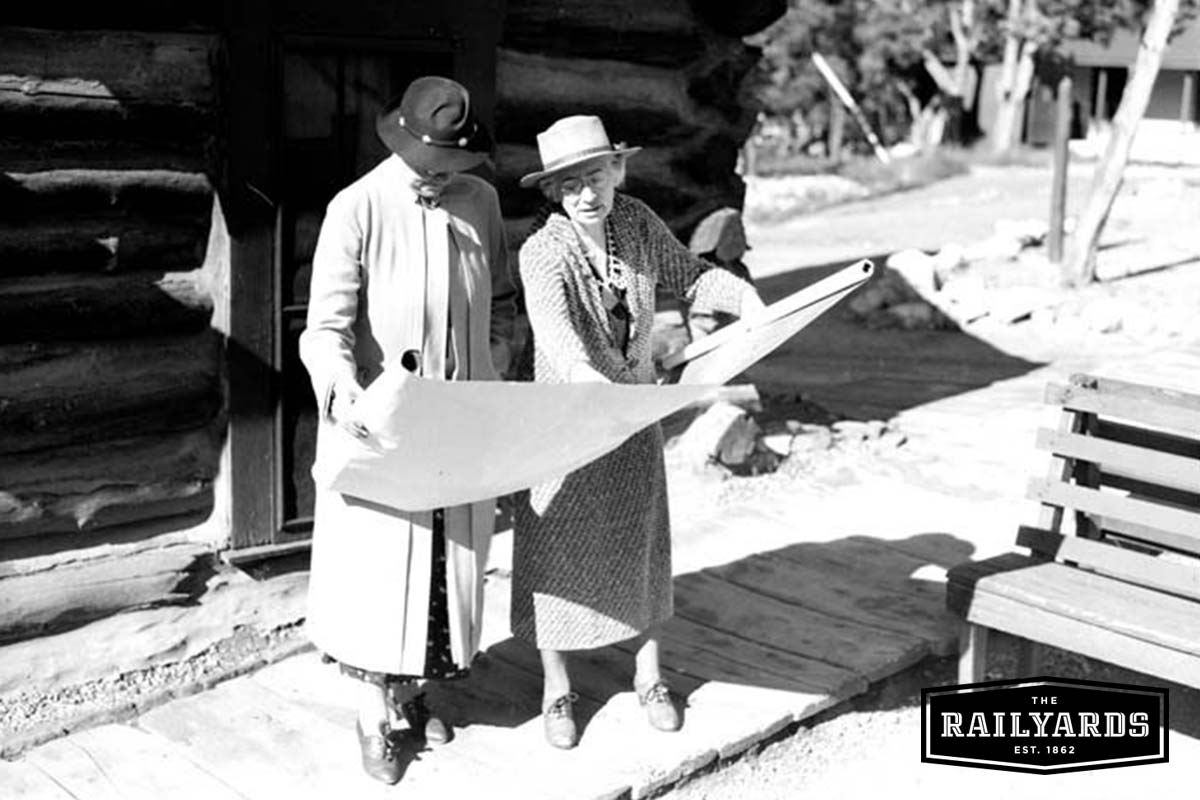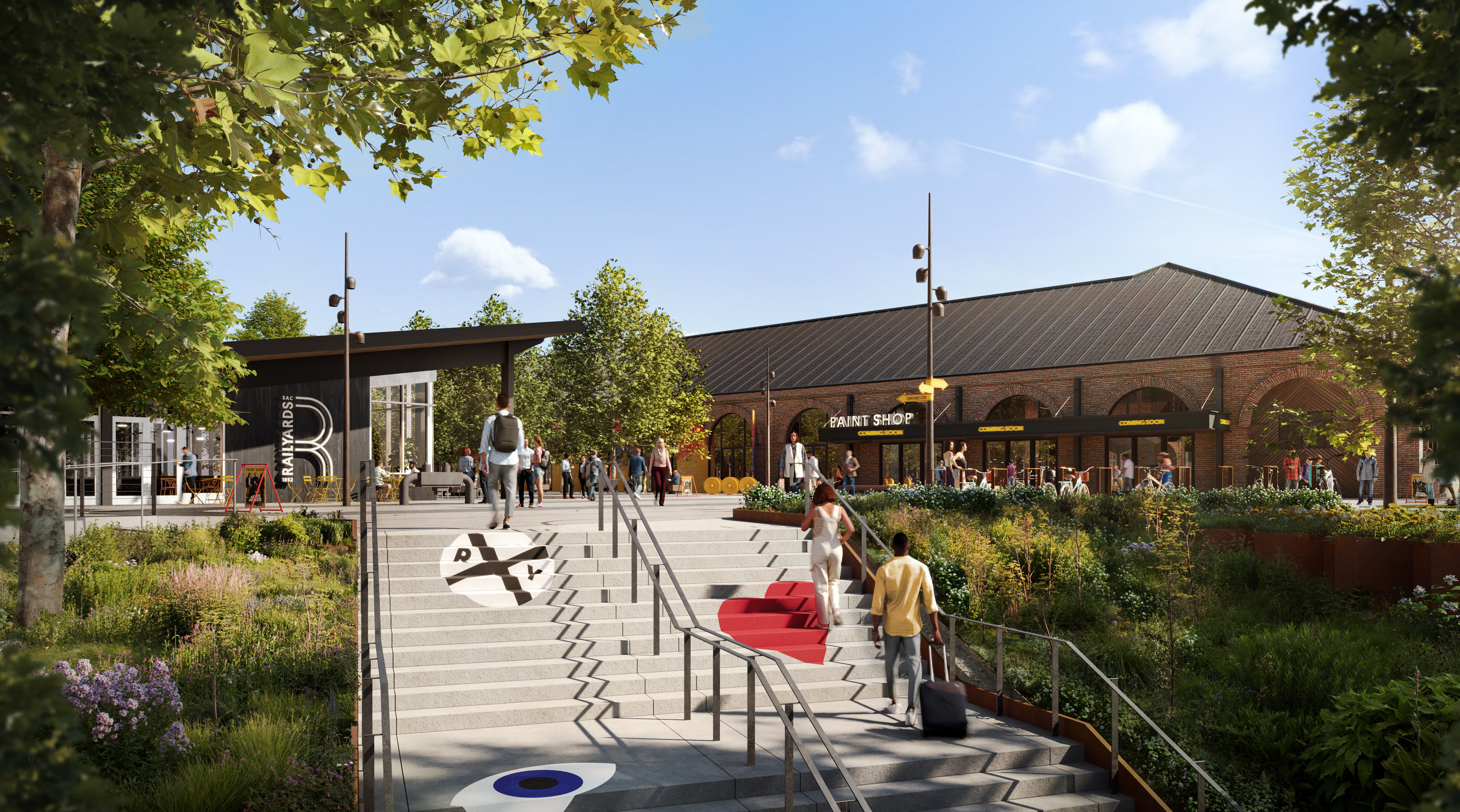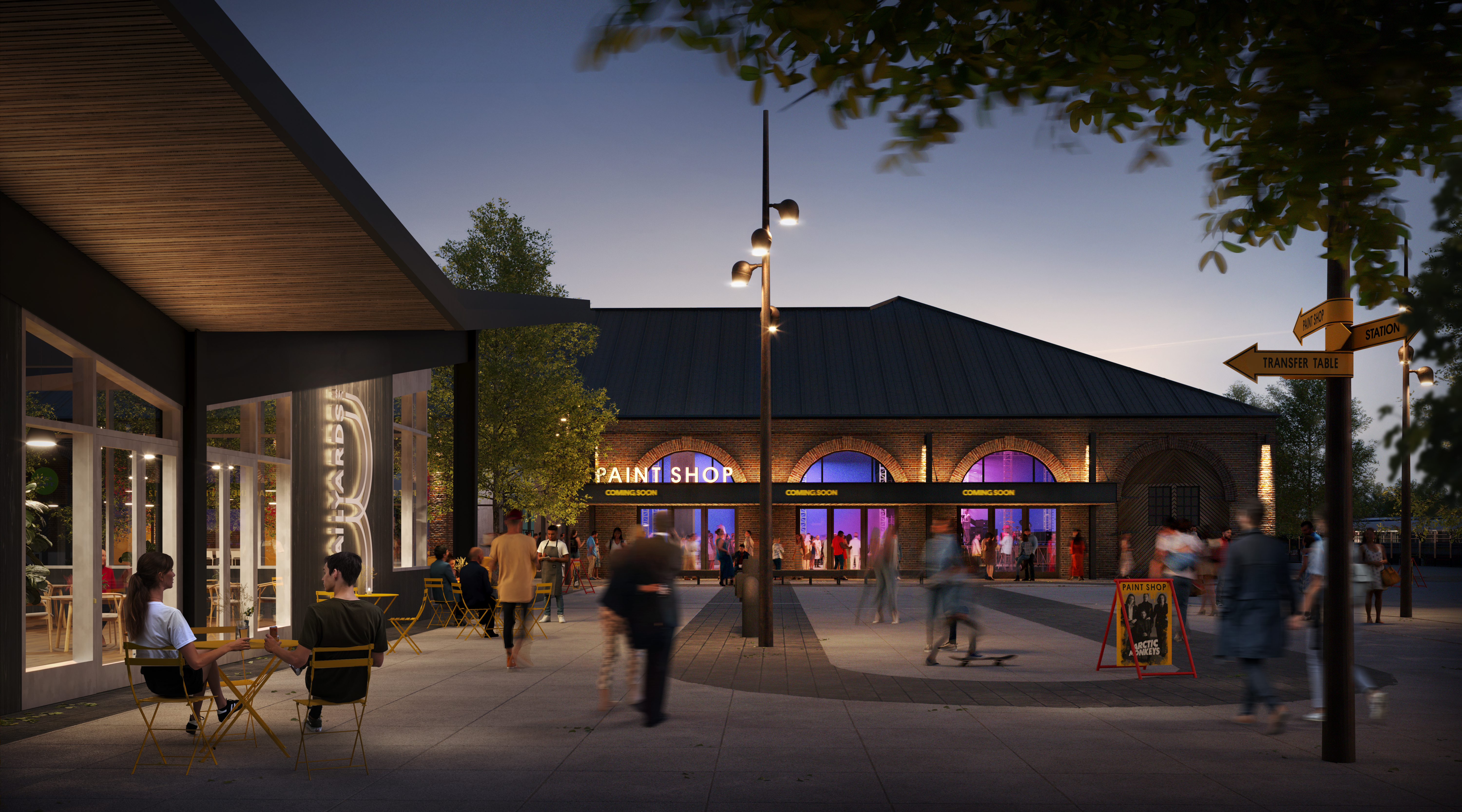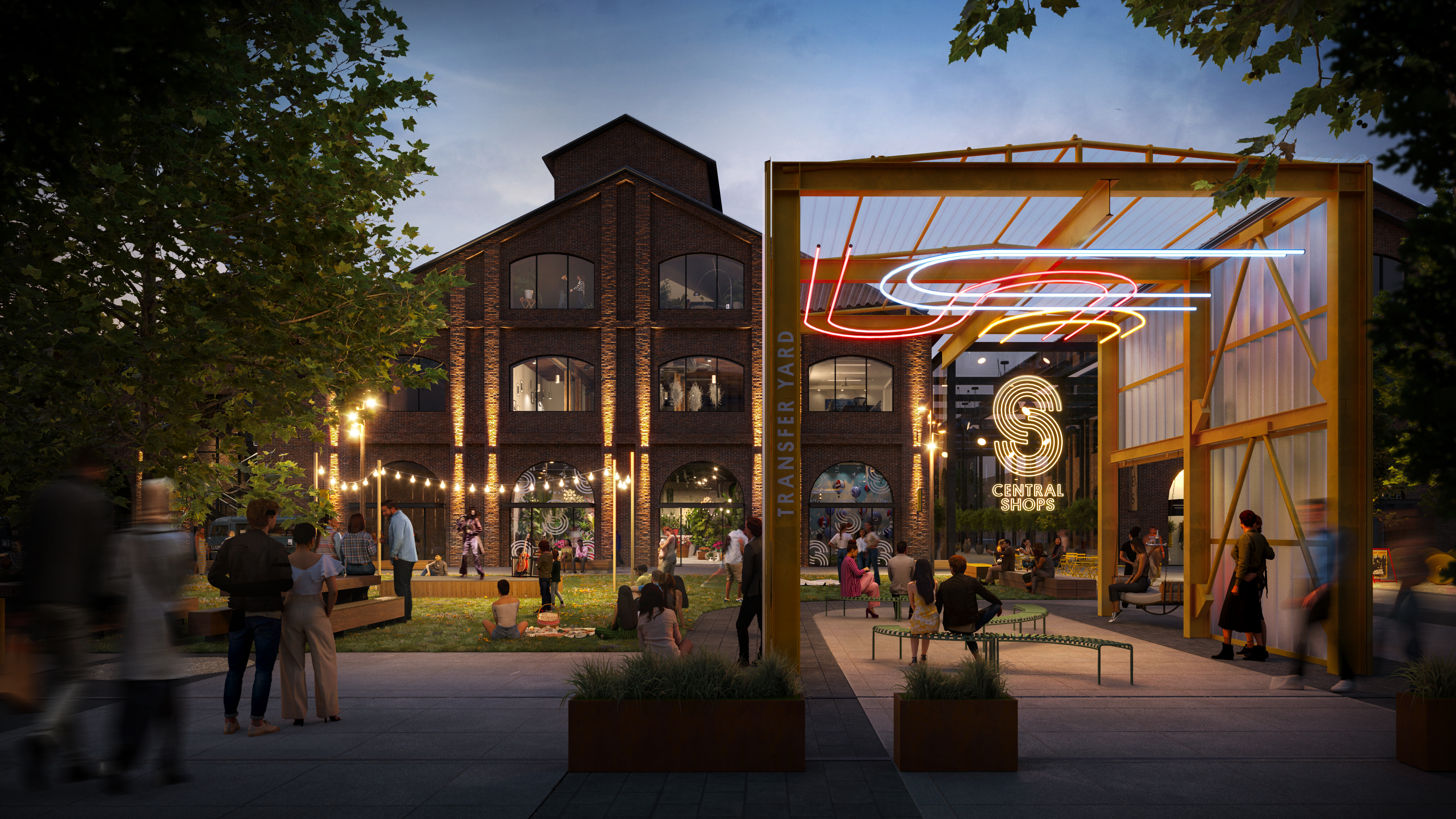
August 26, 2021 / Author: the Railyards
From inventors to engineers and architects, discover the stories of ten women who transformed railroad history. Read more from The Sacramento Railyards.
Image features architect Mary Colter circa 1935, courtesy of National Park Service.
The statuesque brick buildings at the heart of The Railyards, the Central Shops, are a tangible homage to the history of the railroad in Sacramento and the United States. Their weathered glass windows once looked down on a different Sacramento – a Sacramento where the Southern Pacific Railroad provided a third of all of the city’s jobs and the railroads had become the largest industrial employer in the west.
To truly appreciate the history of the railroad, you have to understand the stories of the women who helped shape it. Discover ten innovative women who have influenced railroad history through the centuries.
Discover 10 Women Pioneers of Railroad History
Eliza Murfey
Eliza Murfey was an inventor who focused on the mechanics of the railroad. She created a device, called packing, that was used to lubricate a train’s axles with oil. This helped to reduce derailments caused by seized axles, an important safety innovation.
E.F. Sawyer
In 1872 E.F. Sawyer became the first female telegraph operator. She was hired by the Burlington Railroad in Montgomery, Illinois. Telegraph operators like Sawyer held important positions transmitting information and helping to prevent train collisions.
E.F. Sawyer paved the way for other women in communications. The following year, Union Pacific hired two more women to operate telegraphs in Kansas City. The first female telephone switchboard operator, Emma Nutt, followed close behind in 1878.
Mary Walton
Mary Walton was an influential inventor in the history of the railroad, with multiple inventions that shaped the industry.
The steam engines of the time were loud and emitted large plumes of smoke. In 1879, Walton created a device that forced the smoke from factory smokestacks through a water tank, helping to reduce pollution. This device was later adapted for use on trains.
In 1881, Walton patented a sound-dampening system that used wood boxes lined with cotton and filled with sand, helping to reduce the loud noise created by locomotives as they ran through cities.
Mary Riggin
In the late 19th-century railway accidents with trains, wagons, animals, and pedestrians were an all-too-common peril. After witnessing one such collision, Mary Isabelle Riggin of Newark, New Jersey filed a patent for the first Railway Crossing Gate in 1890. This invention warned pedestrians and drivers of an approaching train and was the precursor to today’s automated gates.
Catherine Gibbon
Catherine Gibbon revolutionized the way train tracks were constructed. Prior to her invention, train track was built using at least 28 pieces of metal. The Gibbon Double Girder Lap-Joint Track, constructed with just four main parts, greatly reduced the number of parts needed, helping to make construction more efficient.
In 1892 Catherine won the John Scott Legacy Medal for Improvement in Street Railway Track Construction.
Olive Dennis
Olive Wetzel Dennis was a civil engineer and the first woman to join the American Railway Engineering Association.
If you’ve ever enjoyed a comfortable train ride with a reclining seat and pleasantly air-conditioned car, you have Olive to thank. Her contributions to rail travel revolutionized the passenger experience and included comforts like:
- Reclining seats
- Stain-resistant upholstery
- Overhead lighting
- Bassinets and bottle warmers for families
She even recommended that Baltimore and Ohio Railroad have stewardesses or nurses on their cars and a la carte dining options for meals.
Mary Colter
Mary Colter, born in 1869, was one of very few women American architects in her time. Her work in the Grand Canyon National Park has become a National Historic Landmark, and she also completed striking work for the Santa Fe Railroad.
Her work for the railroad on the La Fonda hotel, which opened in 1922, helped create the popular local Santa Fe Style. Colter considered the 1930 La Posada hotel at Winslow Station in Arizona to be her masterpiece, and it featured many characteristic elements of her distinctive style, such as red clay tile roofing, beautiful courtyards and garden spaces, and decorative ironwork.
Arcola Philpott
Arcola Philpott was the first African American conductor hired by the Los Angeles Railway in 1944. Philpott drove railcars on the city’s “F” line, running from 116th South Vermont Avenue to the Union Station terminal.
Philpott, a graduate of Chicago’s Loyola University, later became a nurse and worked in research at the University of Chicago.
Leah Rosenfeld
In 1955 Leah Rosenfeld applied for a promotion to be a station agent for Southern Pacific Railroad. Instead, the position went to a man with ten years less experience than she had. At the time, the railroad cited California statutes called protective laws that barred women from working jobs where they were required to lift more than 25 pounds or work more than 8 hours in a day.
In 1964, the founding of the Commission on Equal Employment Opportunity allowed Rosenfeld to seek justice. She filed a discrimination lawsuit against the railroad and in 1971 California’s “protective laws” were declared unconstitutional.
Edwina Justus
Edwina Justus began her career with Union Pacific in 1973 and went on to become the first Black woman to work as a railroad engineer. The position brought her to North Platte, a town of 22,000 where less than 100 people were Black. Edwina faced both racism and sexism throughout her 25-year career. You can read more about Justus' history-making career in her autobiography, Union Pacific Engineer. She retired to Omaha, Nebraska, where she lives today.
These ten women transformed the U.S. railway industry, shaping American history and each city the railroad ran through. Which story touched you? Share your thoughts with us on social!











